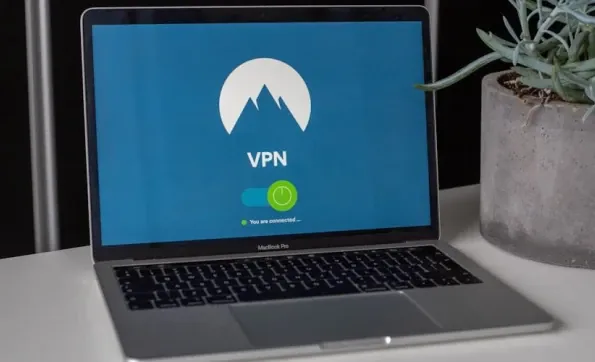The ever-evolving landscape of cybersecurity threats presents increasing challenges that outpace the capabilities of longstanding security measures such as firewalls and VPNs. As more organizations embrace remote work and digital transformation, the inadequacies of these traditional security tools become more apparent, leading to a false sense of security. Companies across various sectors are grappling with the rapid advancements in technology, which leave their conventional defenses lagging behind. The question arises: Are firewalls and VPNs still adequate for protecting today’s digital infrastructures, or have they become relics of the past?
The Evolving Cybersecurity Landscape
Firewalls and VPNs, once the bedrock of cybersecurity, are now considered outmoded and inadequate. While they previously offered a reasonable level of security, they are now revealing vulnerabilities, especially as companies adopt digital transformations. The increasing adoption of technologies such as generative AI, automation, and IoT/OT in 2025 heightens the challenges, providing new avenues for attackers to exploit. These technologies enable the automation of phishing campaigns, the creation of evasive malware, and the expedited development of threats through AI, possibly leading to innovative cybercrime services like Ransomware-as-a-Service (RaaS).
Added to this, the vulnerabilities in VPNs can provide attackers with unauthorized access. A survey by Cybersecurity Insiders highlighted that 56% of organizations have experienced cyberattacks exploiting VPN vulnerabilities within the past year, and a staggering 91% of respondents expressed concerns about VPNs potentially leading to compromising breaches. Even robust firewalls are inadequate in fully protecting major organizations from breaches. As these technologies fall behind, the gap in security widens, leaving sensitive data and critical operations exposed to increasingly sophisticated threats.
Increased Attack Surface
The use of VPNs and firewalls inadvertently expands the attack surface by connecting more users, devices, locations, and clouds via public IP addresses. This expansion allows users to work remotely, further stretching the network’s reach. The surge in IoT devices has led to a proliferation of Wi-Fi access points, which create new attack vectors for cybercriminals. Each new connection becomes a potential entry point for attackers, making it increasingly challenging to secure the entire network effectively.
Relying on firewalls and VPNs extends the perimeter-based security architecture, which includes more deployments, overhead costs, and time wasted for IT teams but results in less security. Additionally, degraded user experience and satisfaction with VPN technology, coupled with the considerable costs and complexity associated with patch management, security updates, software upgrades, and refreshing aging equipment, strain IT teams. The resources required to maintain these traditional security measures could be more efficiently allocated towards more innovative solutions that address present-day security challenges.
Perimeter-Based Architecture Limitations
VPNs and firewalls function like security guards stationed at the entrances of a network, unable to monitor all points simultaneously or stop every threat. Once an attacker gains access, they can move laterally within the network, much like a thief who enters via a less-secured entrance. Firewalls and VPNs struggle to inspect encrypted traffic and enforce real-time security policies at scale, leading to operational inefficiencies. This inability to adapt to encrypted traffic flow means that threats can slip through the cracks, exploiting gaps in security coverage.
The position of VPNs and firewalls can be likened to that of a lone security guard, who cannot effectively monitor all entrances or prevent all threats, leaving the organization vulnerable. Despite their role in mitigating some risks, these measures cannot keep pace with the scale and complexity of modern cybercrime. As organizations digitally transform and extend their networks, constant attacks and a broadening attack surface make the limitations of firewalls and VPNs evident. It’s a matter of time before these gaps are exploited, further pushing organizations to reconsider their cybersecurity framework.
The Case for Zero Trust Architectures
The solution proposed is a shift from network-centric technologies to zero trust architectures. Zero trust minimizes the attack surface by connecting users directly to the applications they need without exposing the entire network. The Zscaler Zero Trust Exchange is one highlighted as an effective implementation of this approach. The Zero Trust Exchange operates on the principle that no user, workload, or device is inherently trusted. It brokers secure connections based on identity, app policies, and risk over any network from anywhere. This paradigm shift focuses on precise access control and strict authentication, fundamentally transforming how access is granted and secured.
The platform addresses the limitations of traditional security measures by ensuring that security policies are enforced in real-time, inspecting traffic as it moves to its destination, and only allowing access to specific applications rather than the entire network. This approach prevents lateral movement of threats within the network, significantly reducing the chances of a major breach. By only providing access to the necessary applications, the exposure to potential threats is drastically minimized, fortifying the network against unauthorized access and breaches.
Embracing Zero Trust for Secure Digital Transformation
The constantly changing landscape of cybersecurity threats presents increasing challenges that surpass the capabilities of traditional security tools like firewalls and VPNs. As more organizations embrace remote work and digital transformation, the shortcomings of these conventional security measures become increasingly evident, leading to a deceptive sense of safety. Companies across various sectors are struggling with the fast-paced advancements in technology, which leave their outdated defenses lagging far behind. This ongoing evolution raises a critical question: Are firewalls and VPNs still adequate for safeguarding today’s digital infrastructures, or have they become outdated relics of a bygone era? The urgency for businesses to reevaluate and possibly overhaul their security strategies has never been higher. With cyber threats growing more sophisticated, relying solely on firewalls and VPNs might not be enough to protect sensitive data and maintain robust security. Organizations need to consider integrating advanced solutions like zero-trust models and AI-based security to stay ahead in this relentless cyber arms race.













